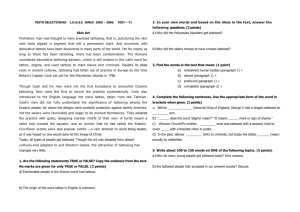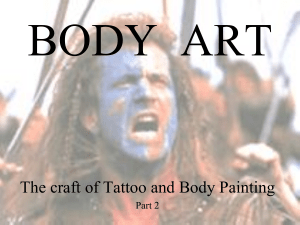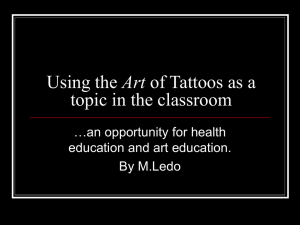BODY ART
advertisement
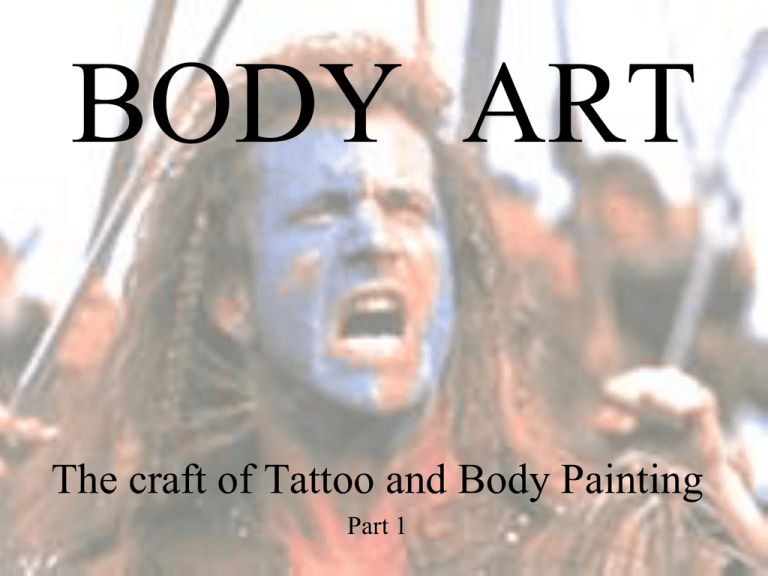
BODY ART The craft of Tattoo and Body Painting Part 1 SKIN ART • The term “Body Art” is actually a broad term used to describe any method of expression that alters the appearance of the human body. • This includes things like piercing, mutilation, body building, plastic surgery and other forms of “body sculpture”. SKIN ART • “Skin Art” is a facet of Body Art that refers to alteration of the skin in ways like tattoo, body painting and scarification. scarification Scarification in Papau New Guinea Scarification today… Not recommended for a variety of health reasons as well as its unpredictable results. piercing Something new? Guess again… Labret (lip plate) African in origin body shape alteration Egyptian art… Was it showing evidence of body alteration? Muyanmar (Burma) neck rings Stretched earlobes (Borneo). But really… What’s the difference between this… body building …and this? Chinese foot binding Is there a difference between this… …and this? Otzi, The Tyrolean iceman, a 5300-year-old mummy http://anthropology.net/2009/07/21/otzi-icemans-tattoos-were-born-in-fire/ • Tattoo and body painting is one of the oldest art forms known to man. 2000 year old mummy from Asia • Tattooing appears on ancient mummies from all corners of the earth and as old as the oldest remains ever discovered. Modern tattoo (as we know it today) comes from the Pacific Islands. British sailors would return from places like New Zealand, Polynesia, Hawaii and Australia with native tattoo’s. The concept eventually moved from the military to the civilian population. The Maori of New Zealand were the most well known for their elaborate all over tattoo’s… (especially for the facial tattoo’s known as Moko). The word “tattoo” is actually a mis-pronunciation of the Polynesian word Tatau, which means “to pierce”. What purpose did tattoo serve? • In most primitive culture body markings served many purposes. 1 - Protection (both spiritual and physical). Act as guides or identification in the afterlife. 2 - Show status and/or group affiliation. Both positive and negative. 3 - Medicinal and healing purposes. As with Otzi… 4 - Mark achievements. Traditional division of the face for Moko patterns. Traditional Maori tattoo uses blue dye inserted under the skin. Tattoo however was not limited to the face (or only to men) but was used across the entire body. The people of Samoa tattooed the legs and buttocks heavily, due to the large surface area that could be covered. The traditional woman's tattoo is called a Malu, and is more open and airy than the male counterpart. The male version, the pe’a, is thicker, with less open space and more ink. The pe’a eventually covers the entire leg from lower back to foot. While some women did wear the traditional full Moko... ... most female tattoo was limited to the chin... ...or the forehead areas. The Inuit women in Alaska also practice chin tattooing. Traditional island tattoo is chiseled into the skin by using sharp instrument called a “comb”. multiple prong Combs Combs are dipped in ink and hammered with a stick so that they vibrate like a tuning fork. This forces the ink beneath the surface of the skin. The act of tattoo (in progress) Tattooing in the western world was brought to a halt in A.D. 787. Pope Hadrian banned the art form, …citing Leviticus 19:28 and 21:5 as well as Deuteronomy 14:1. This was because Crusaders were tattooing themselves with Christian symbols. Why? So that if they were killed in the Holy Land they would receive Christian burials (pilgrims were also tattooing themselves to show they had visited certain Christian religious sites). The church feared the eastern (and therefore Pagan) associations. BODY ART Skin Art Part 2 body painting Almost all cultures at one time have practiced body painting. And most still do (without realizing it). The ancient Celts were the most famous people to paint themselves. The Celts would use Woad, a blue dye to paint mystical symbols on their bodies when engaging in warfare. Woad was also rumored to have a hallucinogenic component, (similar to ancient pigment used in cave paintings). Hence the “crazy” Celtic warrior legend. Celtic design motifs (based on animal forms). Native North Americans also had a highly developed sense of aesthetics, and used face and body painting extensively. The Native Americans not only used body painting in war, but as a status symbol as well. Other methods of marking the body... People have been using the sun and the bodies tanning ability as a stencil for as long as there has been recorded history. This is also called “sun tattooing”
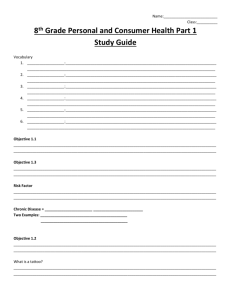
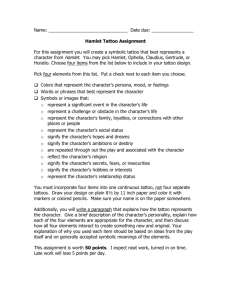
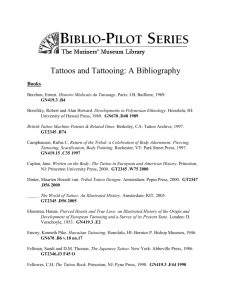


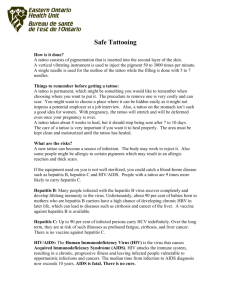
![Body_Art[1]](http://s2.studylib.net/store/data/005398178_1-62f43fb78308c3c2a71796fe5cf61395-300x300.png)

